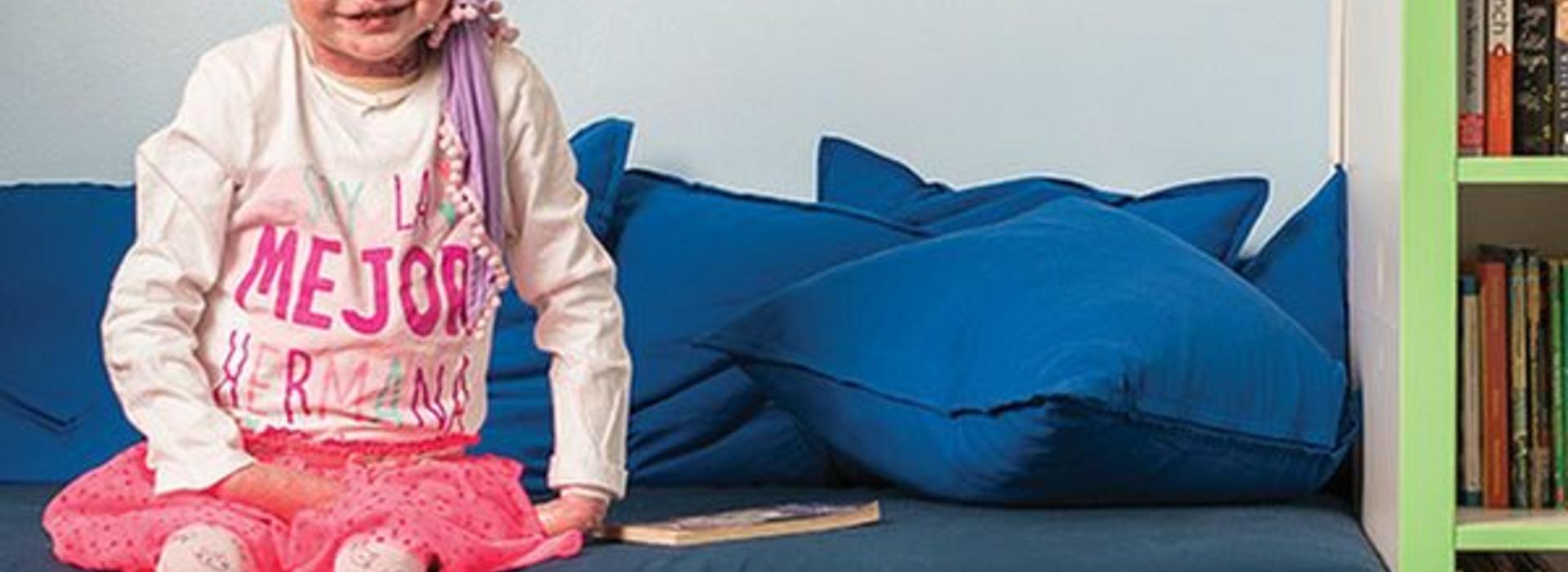
Zuzia’s New Skin: A Pioneering Treatment for EB
Nine-year-old Zuzia Macheta pretends she is a ballerina, tiptoeing around in a frilly pink skirt and doing something she has longed to do her entire life— showing off her tights.
Born with a devastating skin disease called epidermolysis bullosa (EB), Zuzia was unable to wear tights—something most little girls take for granted—until recently, because her skin would slough off when she tried to remove them.
Described by University of Minnesota pediatric hematologist-oncologist Jakub Tolar as “the worst disease you’ve never heard of,” EB affects about 1 in 20,000 babies in the United States. It is the result of missing a protein in one’s genetic makeup that keeps layers of the skin together.
EB can vary in severity. And for some children, like Zuzia, even the slightest friction can result in painful blisters and open wounds. EB also affects the body’s mucosal linings, such as those in the mouth and esophagus, making eating extremely painful. In severe cases, the fingers can fuse together because of the body’s constant-but-flawed efforts to repair itself.
In addition, people with EB run the perpetual risk of infection and, over time, become predisposed to skin cancer. The most severe forms of the disease can be fatal.
Sylwia Macheta, Zuzia’s mother, recalls a day back in their native Poland when Zuzia fell and badly injured her knees. Zuzia cried out, asking why she couldn’t run like other kids without suffering. “That was the moment I told myself I would do everything in my power to help her,” Sylwia says through a translator. “And I was able to keep my word.”
Chance for a Cure
Through social media, the Machetas learned about a clinical trial at University of Minnesota Masonic Children’s Hospital, under Tolar’s direction, that offers a chance for a cure. The U is the only place in the world where a cure-focused EB therapy is available. Other treatments focus on bandaging to prevent infection.
Then they learned that the travel and treatment would cost about $1.5 million. The amount stunned them. Still, the Machetas set a goal of raising the money within two years.
As part of their fundraising campaign, Zuzia’s parents allowed her to go on television and tell her story.
“And she said, and this is a direct quote,” Sylwia recalls, “‘There is a doctor in America. He is magical. He has a way to treat kids like me. He can give me new skin.’”
Within 55 days, the family had met their goal.
A Completely New Concept
At the University of Minnesota, basic-science exploration and patient care are interwoven. Typically, health care professionals identify a need in the clinic, then research scientists set to work on solving the problem. In this case, a parent’s plea a decade ago to help her children who were suffering from EB prompted Tolar and his colleagues to start looking for a cure. The mother sought out the team because of their expertise in bone marrow transplantation.
What Tolar and his colleagues discovered after about a year and a half of experimentation was revolutionary: bone marrow transplantation, used primarily to treat blood cancers originating in the bone marrow itself, could help people with a disease in a completely different organ—the skin.
“This had never been done before,” says Tolar, who directs the U’s Stem Cell Institute. “I didn’t know it at the time we started this research 10 years ago, but it opened a totally new field in transplantation biology.”
This breakthrough builds on a legacy of innovation in blood and marrow transplantation at the University, where the world’s first successful bone marrow transplant was performed in 1968.
“It’s important not to see this as a one-off,” Tolar says. “It’s not. It’s really a continuation of what this place is about and how deep we go in traditions.”
Learning From The Kids
The EB treatment is part of an early-phase clinical trial, but it’s also considered the standard of care because there are no other cure-focused alternatives.
“The individuals who have EB, they don’t have an option,” says Tolar, a Distinguished McKnight Professor and holder of the Edmund Wallace Tulloch and Anna Marie Tulloch Chair in Stem Cell Biology, Genetics, and Genomics. “They are like my kids with leukemia: if you don’t do something, they die.”
And Tolar isn’t one to do nothing. About 30 kids have participated in the clinical trial so far, and Tolar and his team have tweaked the protocol four times.
“We have learned from every single kid who has been transplanted,” he says.
Zuzia Macheta is the first participant in the most recent arm of the treatment study, which involves receiving a bone marrow transplant from a half-matched donor like a sibling or parent—in Zuzia’s case, her younger sister, Ala. It also involves three infusions of special “nurturing” stem cells called mesenchymal stromal cells post-transplant. A small quantity of these cells was harvested from Ala’s marrow and then grown in culture, ensuring a perfect match to Zuzia’s new immune system.
To continue reading the full story, visit Legacy.